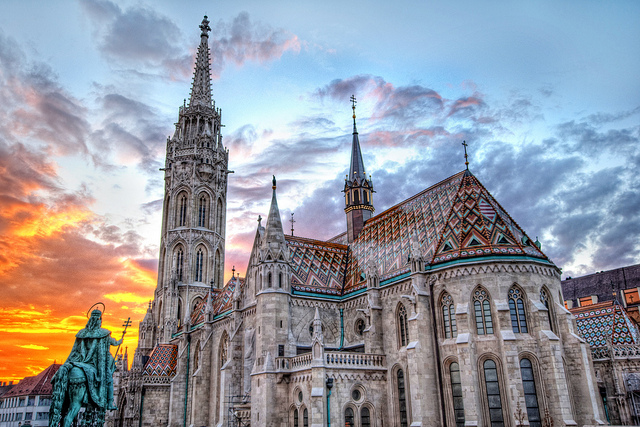
Matthias Church, Budapest: A Tapestry of Faith, Triumph, and History
Nestled within the captivating Buda Castle District of Budapest, Matthias Church stands as an architectural marvel, weaving together centuries of history, resilience, and spiritual significance. This journey through time not only unfolds the narrative of a church but also encapsulates the broader historical context, where political powers and religious transitions shaped the destiny of this remarkable structure.

Photo by Westend61
Old churches in Europe serve as poignant reminders of a bygone era when Christianity held sway over politics. However, in certain countries like Hungary, the echoes of Muslim occupation have left indelible marks on these sacred spaces. Matthias Church, colloquially known as the Church of Our Lady, stands as a poignant example of a religious sanctuary touched by the tumultuous tides of history.
Originally commissioned in the 11th century by Saint Stephen, King of Hungary, the church’s original structure fell victim to the ravages of the Mongol invasion. Rising from its ruins, a new Gothic church emerged, initiated by King Bela in 1255. The church later evolved, incorporating a hall and becoming an integral part of the majestic Buda Castle.

Photo by Things Budapest
The tranquility of Matthias Church was shattered during the Ottoman conquest in 1544. The church endured a tumultuous period, losing its medieval roof and being desecrated as it was transformed into a mosque. Despite the hardships, the church became a symbol of resistance as locals concealed a statue of the Virgin Mary within its confines. The liberation of Hungary marked the church’s return to its sacred purpose, undergoing restoration by the Franciscan and Jesuit orders.

Photo by Radio Free Europe
Matthias Church, rebuilt multiple times, attests to the triumph of Christianity over Islam. Notably, the reconstruction after the Ottoman occupation introduced a vibrant roof adorned with brightly colored tiles, a departure from the traditional Medieval wooden roof. The church boasts two towers – Bela Tower and Matthias Tower – each honoring Hungarian monarchs, with the latter hosting the cathedral bells.

Photo by KleesButterfly
Regrettably, the Ottoman conversion led to the loss of the church’s exquisite frescoes. Nevertheless, the modern structure showcases a harmonious blend of Ottoman and European decorative styles. Non-figural paintings on the ceiling and stained glass windows add a timeless charm to Matthias Church, a testament to its enduring spirit.

Photo by Travel Past 50
Post the restoration of the Hungarian monarchy, Matthias Church became a venue for royal weddings, funerals, and coronations. It witnessed the coronation of the last two Hungarian kings and hosts a replica of the coronation regalia. The crypt houses the final resting place of several monarchs, and a museum of sacred art adds to the cultural richness. The Knights of Malta chapel within the church pays homage to deceased Hungarian clergy through their coats of arms, an annual All Saint’s Day ceremony commemorating their contributions.

Photo by Things Budapest
Matthias Church, ensconced in the heart of Budapest’s historic Buda Castle District, emerges not merely as a religious edifice but as a living chronicle of Hungary’s tumultuous past. Its architectural resilience, spiritual significance, and role in royal ceremonies make it a cultural treasure, a timeless emblem of faith and triumph over adversity. The orangey roofs of Matthias Church continue to stand tall, a poignant landmark in Hungary’s capital, beckoning visitors to immerse themselves in the rich tapestry of its history.















